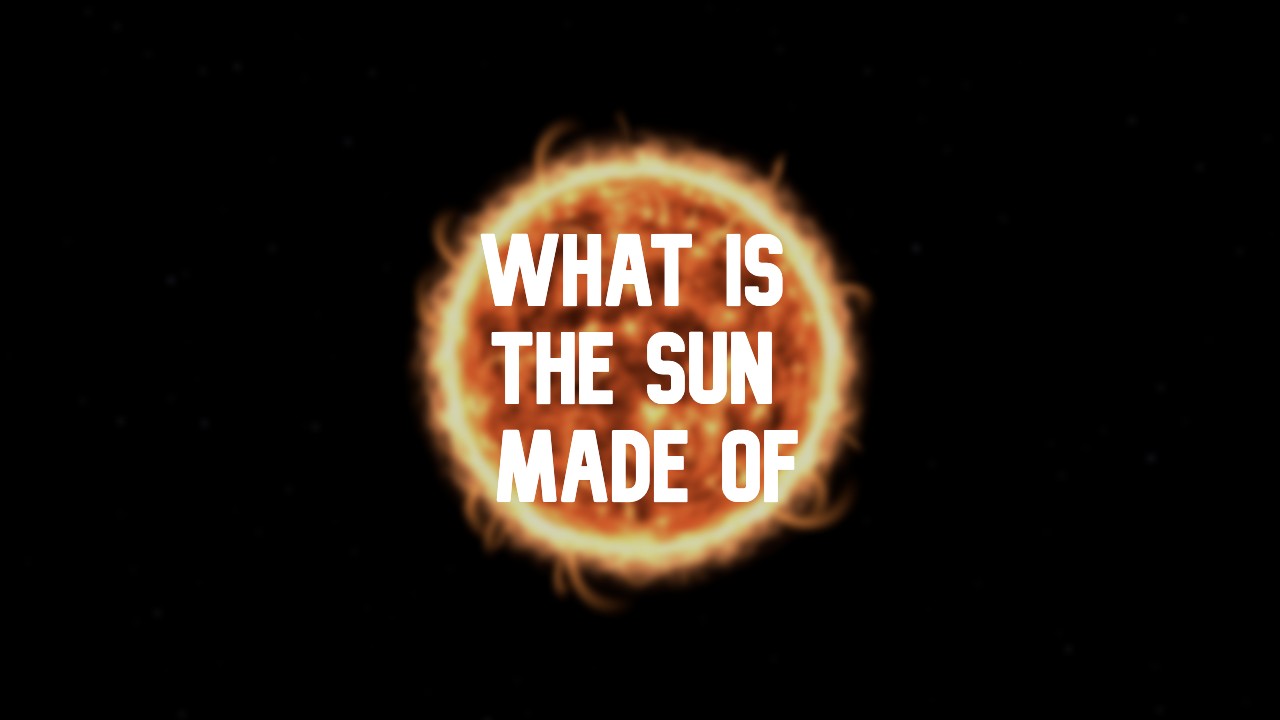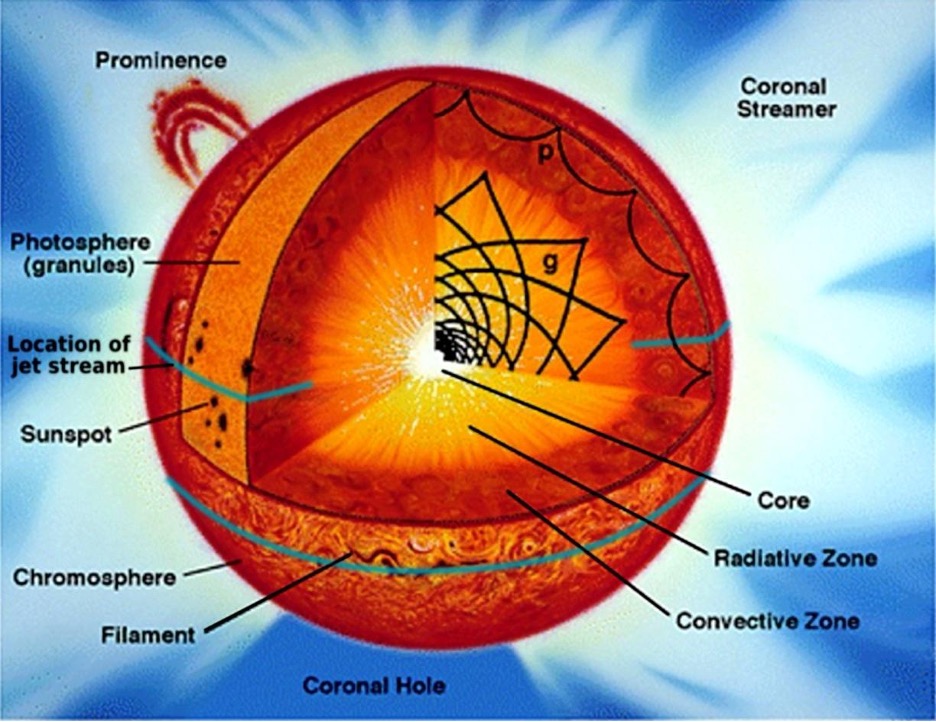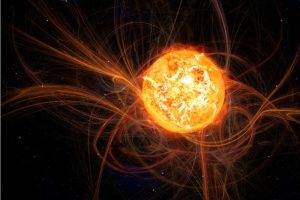How did it emerge, why does it shine, and what is the Sun made of?
15th Dec 2022
The influence of the Sun on our planet, as the most powerful resource of natural light and heat, is immeasurable. Thanks to it, each square meter of the Earth’s surface receives over 55 kW of energy a year. It is its rays that ensure the growth of plants, the saturation of the atmosphere with oxygen, the disinfection of the environment, and the health of people. But what is this body, what is the composition of the Sun, and how long will it last?
We are used to receiving energy from Earth’s resources created under the influence of the Sun. Its “health” determines modern life and the future of our civilization. But we understand that this source of life can dry up, which is why we are closely monitoring its condition. This article discusses what the Sun is made of and for how long it will shine for us.
The Sun riddles
For billions of years, our luminary has been appearing in the sky in the morning and hiding behind the horizon as night approaches. For early civilizations, this cycle symbolized infinity, while the light was considered a manifestation of higher powers. No wonder some cultures still consider the Sun a deity. The ancients believed that it had always existed and, thus, would keep shining forever. But modern science has dispelled these myths.
Is the Sun a planet or a star and why does it shine?
From the basic course of school physics, we know that the Sun is a star, a spherical bunch of gases heated to millions of degrees.
Before the radioactivity phenomenon was discovered, it was impossible to answer the question of why the Sun shines. E. Rutherford and A. Eddington were the first to suggest thermonuclear fusion reactions in its depths ─ hydrogen turns into helium, emitting powerful streams of photons, which we perceive as light.
What kind of star is the Sun?
According to the spectral classification of stars, the Sun is a Yellow Dwarf with a mass 330 thousand times greater than that of the Earth. Since its magnetic activity and luminosity are subject to periodic changes, it is classified as a low-activity variable star. And this star is not unique in our universe. There are many that are similar in the constellations of Gemini, Scorpio, Hunting Dogs, Puppis, and Draco.
How was the Sun formed?
Scientists have established that this is a young star (3rd generation), born about 4.5-4.7 billion years ago. No one still knows how exactly it happened, but there are several hypotheses.
The most popular one claims that the Sun emerged from a cloud of gas and dust, which, in turn, was formed as a result of the supernova formation. One of the theses to substantiate this argument suggest that the Sun has a large amount of uranium and gold in its core. Another hypothesis suggests a long chain of transformations — from a comet in the galactic periphery into an icy planet, then a giant planet, an infrared Brown dwarf, and further, to the Sun’s current state.
Such physical process cannot happen without the loss of hydrogen. When it burns out almost completely, the star will become so large that it will swallow the Earth, burning it to the ground. You can read more about the Sun’s influence on our planet in another article on the age of the Sun.
What is the Sun made of? Percentages

The Sun is located over 93.2 million miles (149.6 million km) away from the Earth, which is also 109 times smaller in diameter. Its mass is 99.87% of the total mass of our entire solar system, and its bright glow is brought on by a temperature of 9932 °F on the Sun’s surface.
As to what gases the Sun is made up of, NASA claims that it is mainly hydrogen (70%) and helium (28%). The remaining 2% is distributed between carbon, nitrogen and oxygen, as well as several other elements (neon, iron, sulphur, silicon, and magnesium).
According to Hans Bethe’s hypothesis, fusion reactions are constantly taking place inside the Sun. It shines because hydrogen is converted into helium in its core, with the subsequent release of energy (gamma rays and neutrinos). Thus, the Sun’s composition of gases is gradually changing. The released energy is transferred beyond its atmosphere, and after eight minutes, it reaches us in the form of light and heat. Now, let’s take a quick look at the Sun’s structure.
The core
The central part has a radius of about 150-175 thousand km and a substance density of 150,000 kg/m³ (150 times higher than the density of water). It is here that a proton thermonuclear reaction is constantly taking place, resulting in helium-4 formation, and converting 4.26 million tons of matter into radiation every second. What is the core of the Sun made of? Roughly 92% of hydrogen ─ the main fuel for helium synthesis.
Gravitational forces create tremendous pressure and temperature (approx. 27 million °F or 15 million °C). As it heats up, the merged hydrogen atoms converted into helium disintegrate into charged particles, and the gas turns into plasma.
The power generated by various zones of the core depends on the distance to the centre of the Sun, where, according to theoretical estimates, it is 276.5 W / m³. The specific heat release of the entire volume is two orders of magnitude less. Thanks to this, the reserves of solar “fuel” will last for 120 million years. All the released energy passes through different layers, up to the photosphere, from where it is radiated as sunlight and kinetic energy.
Radiation zone
This zone is located at a distance of 0.2 to 0.7 radius from the centre. There is no convection here, so energy transfer happens via the emission and absorption of photons. Here, photons can wander (due to reflection from the inner layers) for several thousand to millions of years before reaching the surface.
Convection zone
In this 200,000 km (125,000 miles) thick zone, vortex motion of plasma occurs. Here, the temperature drops below 3,500,000 °F (2,000,000 °C) and is very close to the surface, which is called the photosphere, to about 5500 C.
The plasma of ionized atoms moves up to the photosphere, where it cools down and sinks back. Moreover, the movement in both directions occurs at a significant speed (up to 6 km / s). These movements cause a dynamo effect, generating a powerful magnetic field with a complex structure.
Sun surface
Many wonder, is the Sun solid? No, because it doesn’t have a surface as such. There is a photosphere ─ the outer layer visible to us. Its thickness is about 250 miles. Above the photosphere are the chromosphere, the transition zone, and the corona. The latter is much hotter than the layers below it. As to why it is still a mystery for humanity.
How do we know what the Sun is made of?
Science! At one time, people believed that the Sun revolved around the Earth. Now we know it’s the other way around. We already know its mass, dimensions and structure. And although scientists know much more about the Sun and its composition, it is still impossible to offer a 100% reliable account. Why? We cannot look inside.
However, we can already say what gases the Sun is made up of and answer a lot of other questions about this star. Scientists have learned to simulate the processes occurring inside the star that gave life to the Earth, Mars, Mercury, Venus and other nearby planets in our galaxy. One of the most important tools for studying the Sun is the Super-Kamiokande (Super-K) neutrino detector. This device is located in the laboratory inside of the Kamioka zinc mine (Japan), at 3280 feet below the Earth’s surface.
The device is a steel cylindrical tank filled with the purest water (50 thousand tons), with over 11 thousand photomultipliers installed on its walls. The detector is equipped with a huge amount of electronics, computers, and calibration devices. An extremely light-sensitive device captures even single quanta, which allows capturing neutrinos and evaluating the Sun’s composition in real-time.
Conclusion
Now that you know what the Sun is made of, and how long it will nourish our planet before killing it, it may be the right time to ask ourselves — are we doing everything right, and how rationally are we using such an important resource? After all, things can change in the blink of an eye, and we should be readying ourselves for that.






Thank you for your comment! It will be visible on the site after moderation.